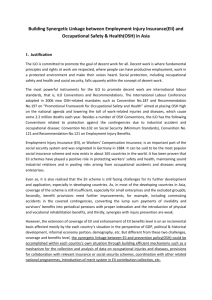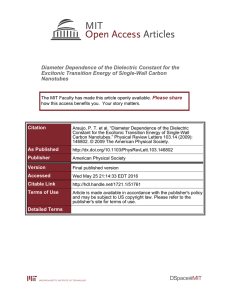Introduction to Finance file CORE BOOKS
advertisement
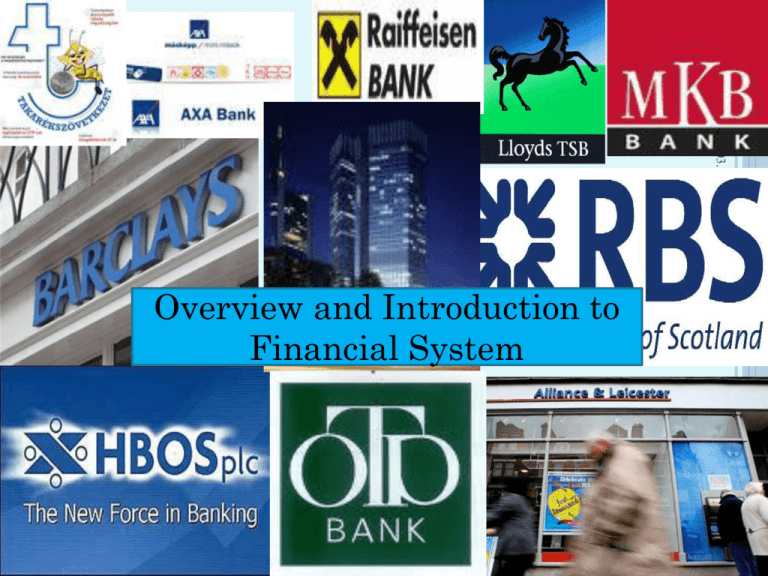
I. BANKOK 2016.03.14. 1 Overview and Introduction to Financial System Overview and Introduction to Financial System • Introduction Core books Requirements Presentation, evaluation • Overview on the whole financial system • Historical background of money INTRODUCTION Course: Introduction to Finance Department: Finance, EII.37 Head of Department.: Dr. Vígvári, András Secretary: Zsuzsanna Rébel EII.37 Subject coordinator teacher: Andrea Vallyon, EII.39; vallyon.andrea@bgf.kkfk.hu, vallyon.andi@gmail.com Consultations: at EII.39 on Thuesdays at 14.50-16.10 Materials: Sharepoint Pénzügy Tanszék Angol tagozat Introduction to Finance file & Coospace: Introduction to Finance file CORE BOOKS Lawrence J. Gitman: Principles of Managerial Finance, Addison - Wesley 10th Edition http://wps.aw.com/aw_gitman_pmf_11 Brealey and Myers: Principles of corporate Finance, West Publishing Company www.mhhe.com/business/finance György Székely: The Essence of Money and Banking A Handbook for Financial Managers. KJK-Kerszöv Kft. 2002. Stephen Valdez: An Introduction to Global Financial Markets, Macmillan Press Ltd.1997 REQUIREMENTS To pass Successful written exam ( 56 points from 100 points ) 3 parts: Test questions ( pre-exam: Dec. 14) Calculations ( Oct. 26) Essay (pre-exam: Dec. 14) Presentations alternatively (10-15 minutes) in lecture (max. +15 points) – topics are related to lectures’ themes PRESENTATION Alternative Could be made in pairs Max 15 minutes, one per each lecture Hand-out + Power Point Application for presentation: after the lecture Topics ( see sharepoint) Evaluation: presentation skills + hand-out materials OVERVIEW AND WELCOME! What does financial system mean in the economy? What is its task? – determinations Who are the participants? Direct and indirect flow of capital What are the instruments in the financial markets? Different markets and tasks Investment decision from the private investor’s place FINANCIAL SYSTEM Markets Instruments Rules, acts, regulations Institutes People Techniques Money and capital connections in the economy FINANCIAL INSTITUTIONS AND ITS ENVIRONMENT INTERNATIONAL ENVIRONMENT, INTERNATIONAL INSTITUTIONS PARLIAMENT, ACTS,REGULATIONS STATE BUDGET SUPERVISORY INSTITUTIONS, AUTHORITIES CENTRAL BANK FINANCIAL INSTITUTIONS MONEY SUPPLY AND DEMAND Borrowers and lenders – supply and demand Borrowers Individuals Companies Government Public corporations Municipalities Lenders: individuals (and companies) Deposit in Commercial bank Shareholder Investment funds, mutual funds pension funds Insurrance companies INTERMEDIARIES Intermediaries (pénzügyi közvetítők)– financial institutes Investment funds, Mutual funds Pension funds Insurrance companies Commercial banks Financial Institutions 2016.03.14. Money demand Companies Money supply HOUSEHOLDS Government Government Municipalities, Non-profit sphere, Fundations Businesses Households Financial Markets (exchanges,OTC) 12 FINANCIAL INSTRUMENTS AND FINANCIAL MARKETS Securities Freely bought and sold Shares, preference shares Corporate and goverment bonds, eurobonds T-bills certificate of deposit, commercial papers Financial markets - primary - secondary INVESTMENT DECISION Market situation- the pyramid Instruments as a legal claim Participants (two main types: bond and share) ( bearish and bullish traders and speculators) Institutions and regulations MATERIALS FOR THE TOPIC Stephen Valdez: An Introduction to Global Financial Markets,Macmillan Press Ltd.1997 – chapter 1 György Székely: The Essence of Money and Banking A Handbook for Financial Managers. KJK-Kerszöv Kft. 2002. Lawrence J. Gitman: Principles of Managerial Finance, Addison - Wesley 10th Edition – see sharepoint: CH1:21-28old. Sharepoint: Keown CH2 Financial markets and interest rates Lecture 1. ppt. THANK YOU


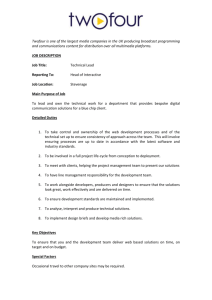
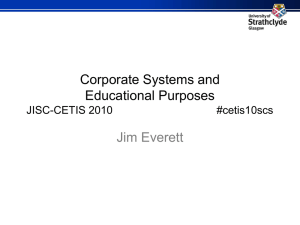


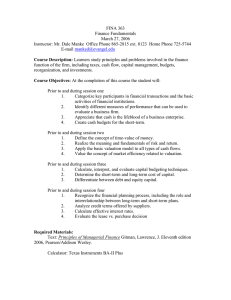
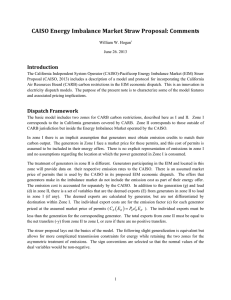
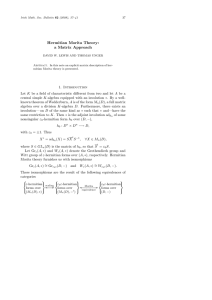
![[16.00.08] FAQ on Employee and Investment Incentive](http://s2.studylib.net/store/data/010399756_1-ef490de28b8e4755986fc71c3ffa9002-300x300.png)
